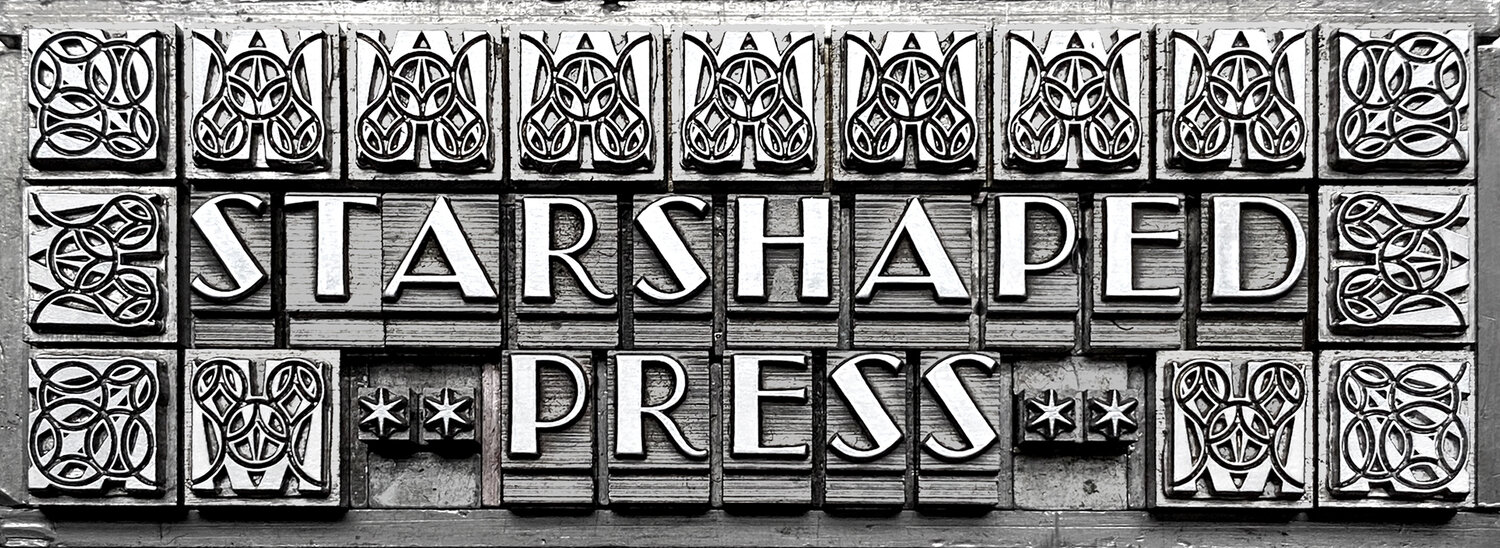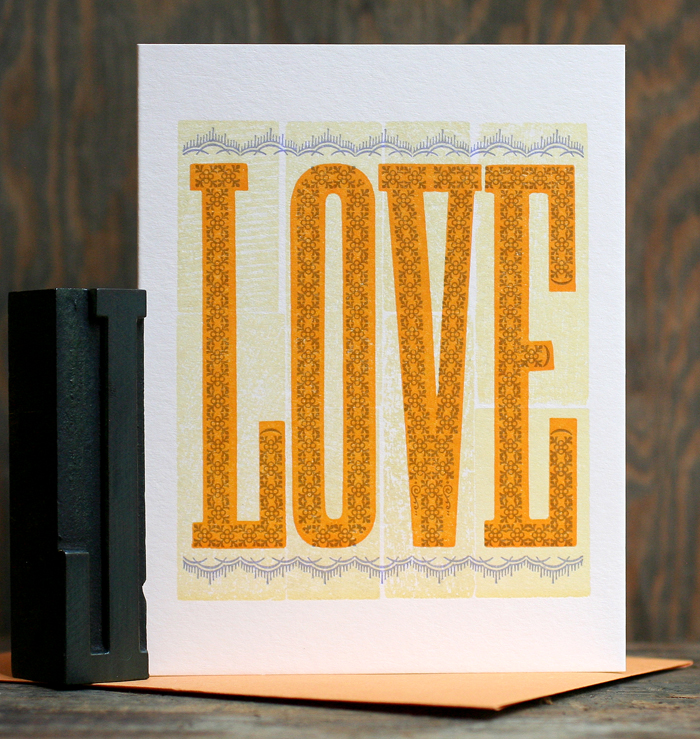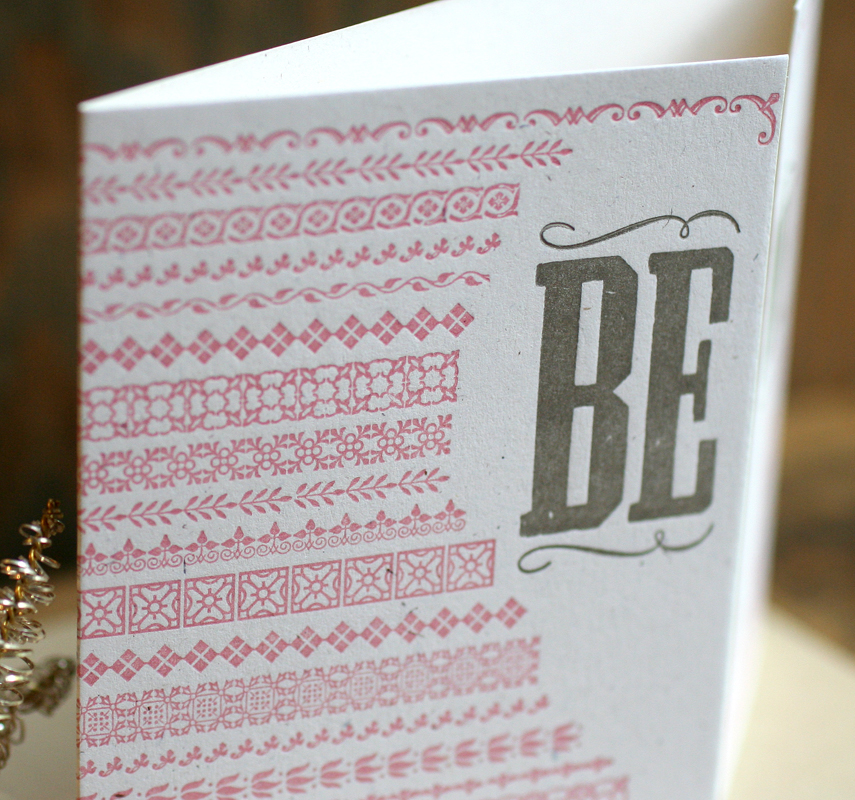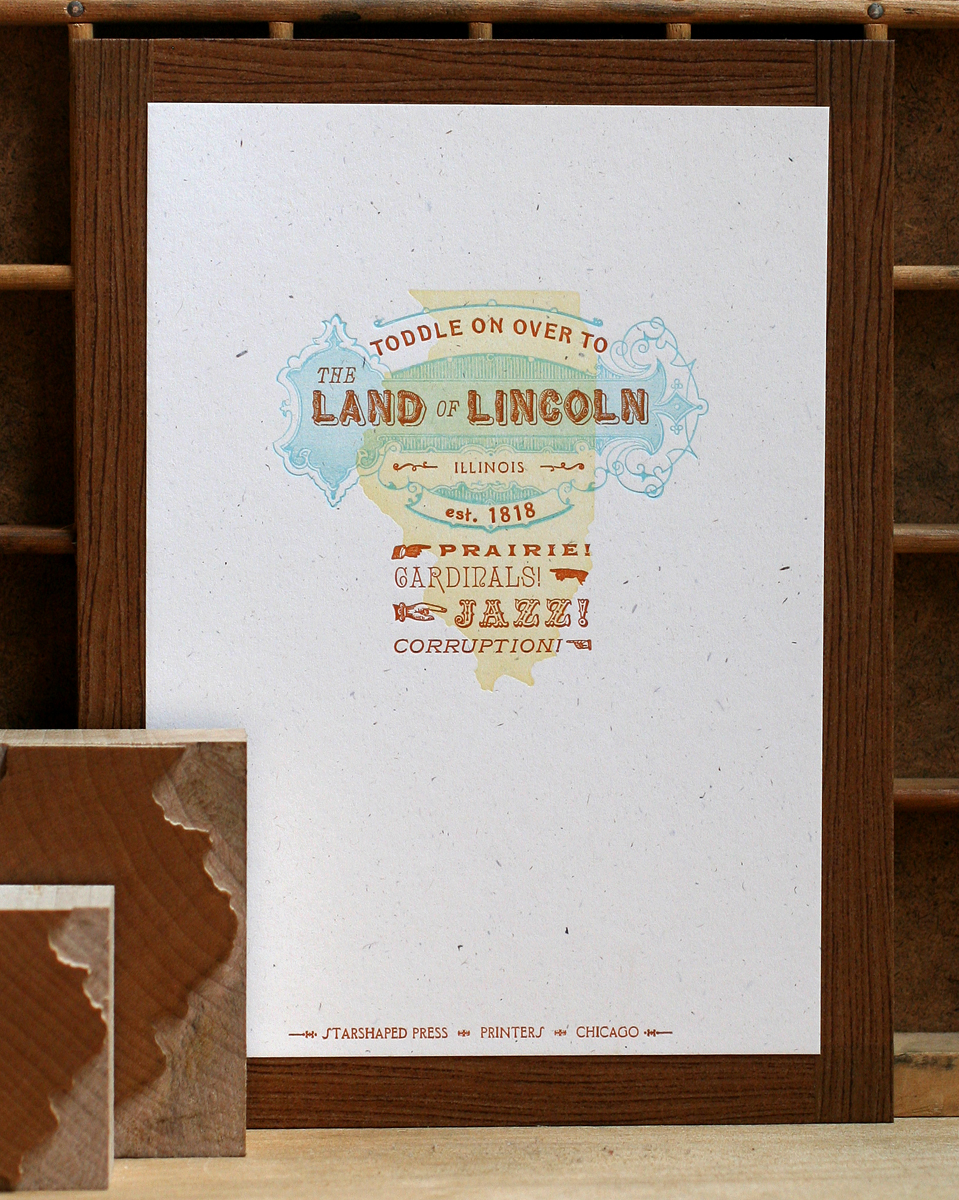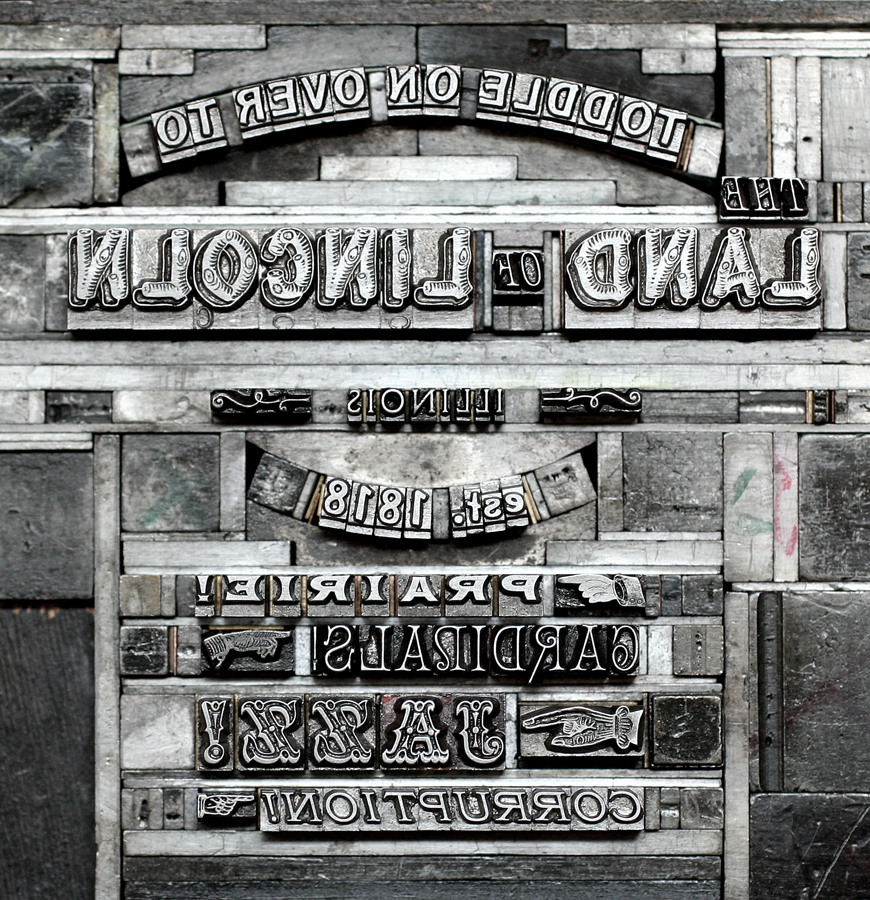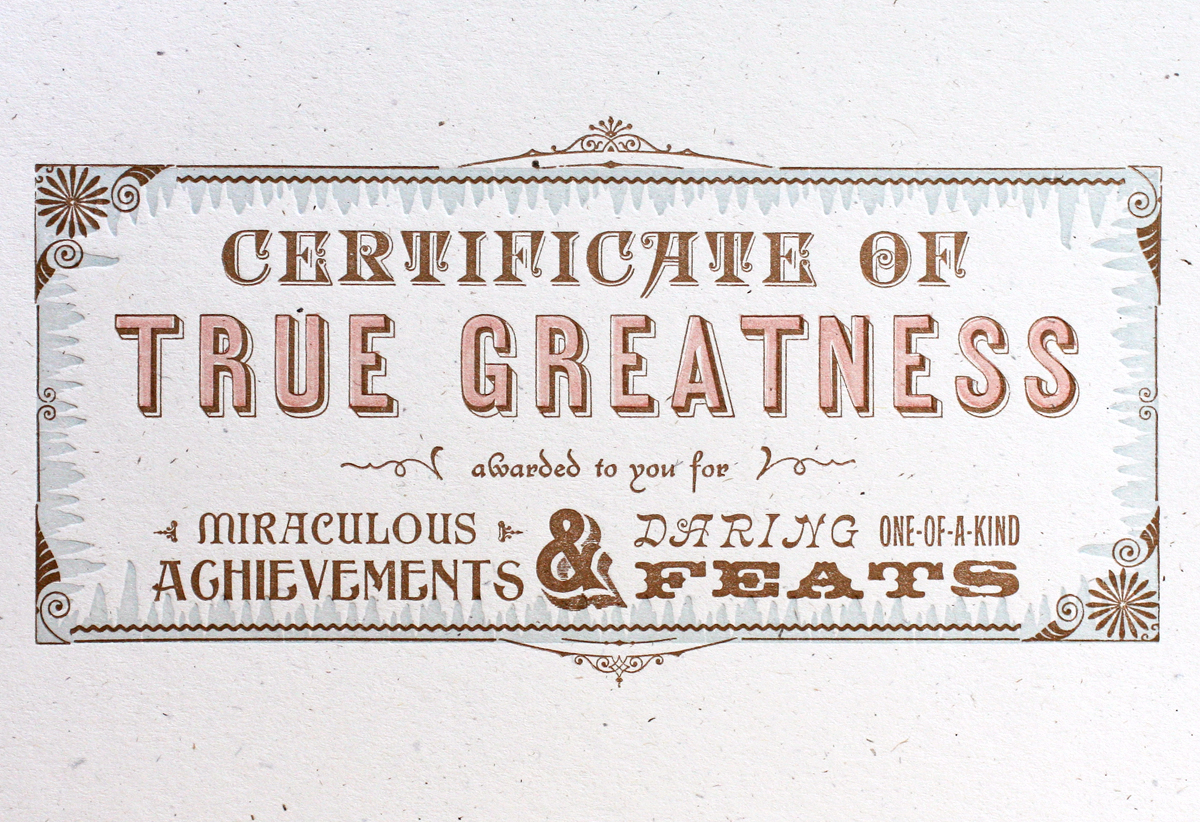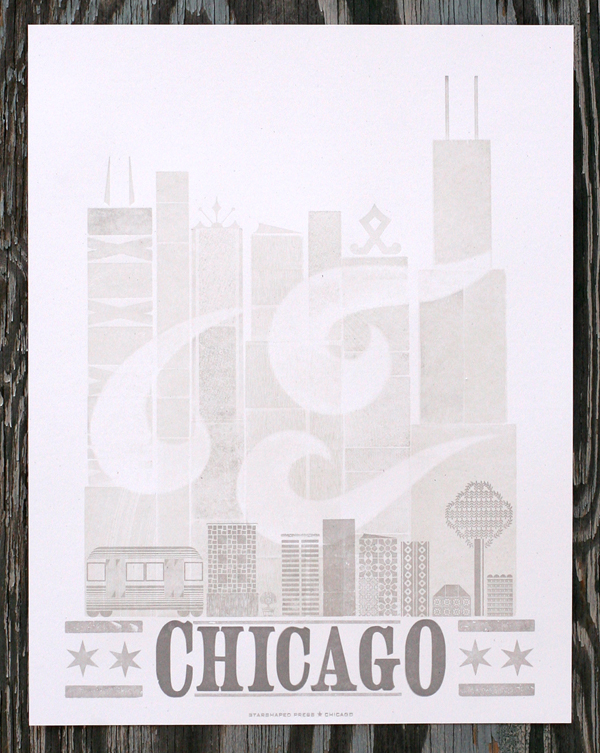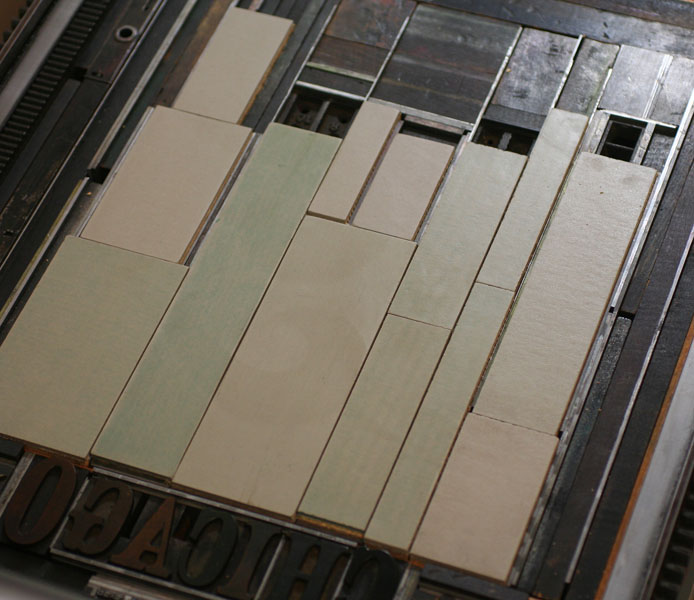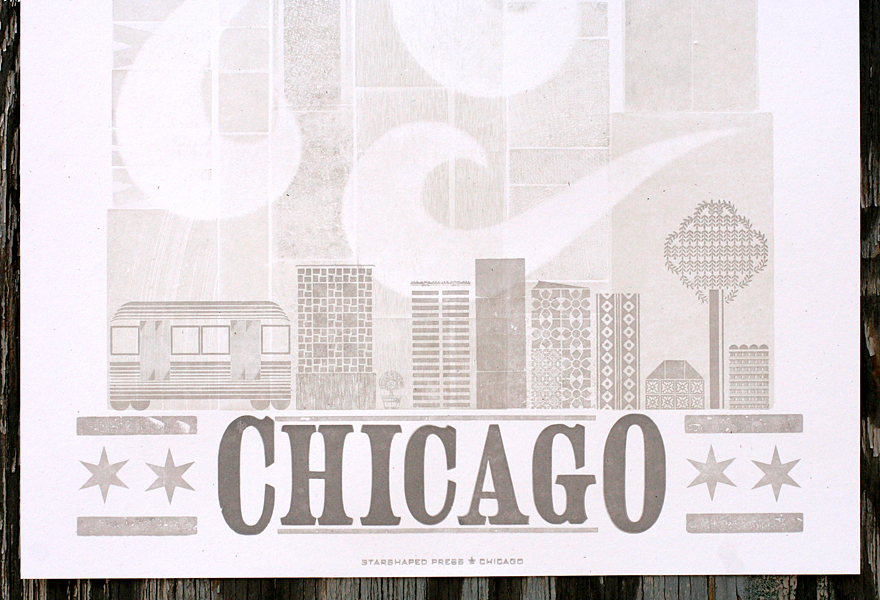One of the wacky things about printing for the wholesale market is the scheduling. While it's just September, our Valentine's Day cards are finished and ready to go! There are three new ones to add to the catalog this year and all three are unique in their inspiration. The first one was built around this simple, skinny wood type, with the idea that we could add ornamentation for a folk art sampler feel.
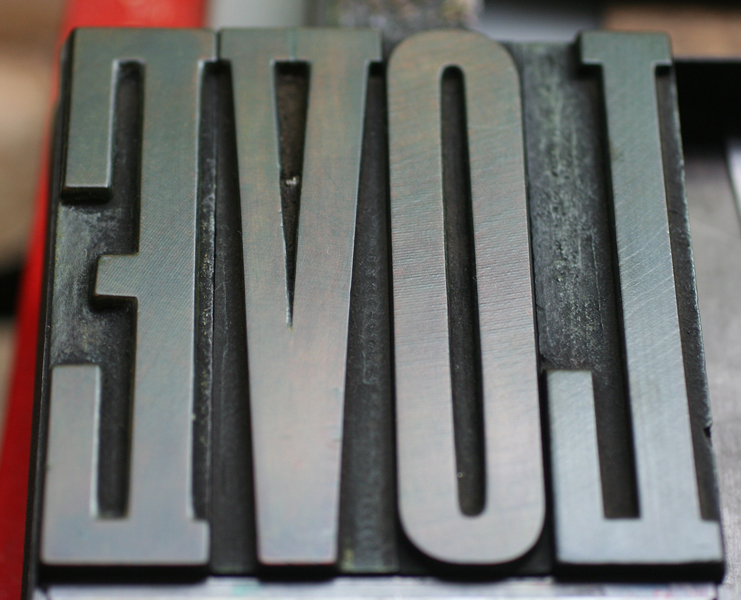 That was the easy part! Next came the ornaments, forced into typographic lettering.
That was the easy part! Next came the ornaments, forced into typographic lettering.
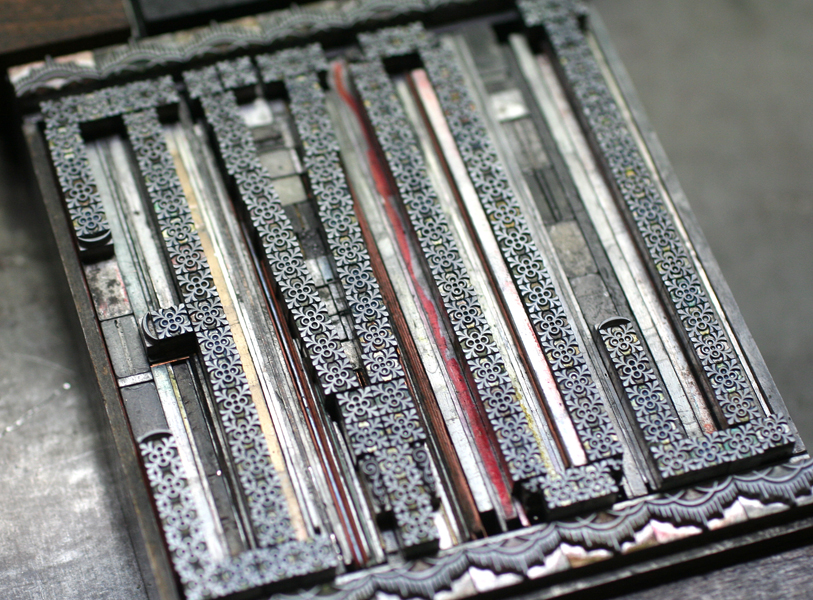 Here's the final card, printed in orange, lavender and pale yellow. The close up shows how the background was printed with the textured back side of wood type.
Here's the final card, printed in orange, lavender and pale yellow. The close up shows how the background was printed with the textured back side of wood type.
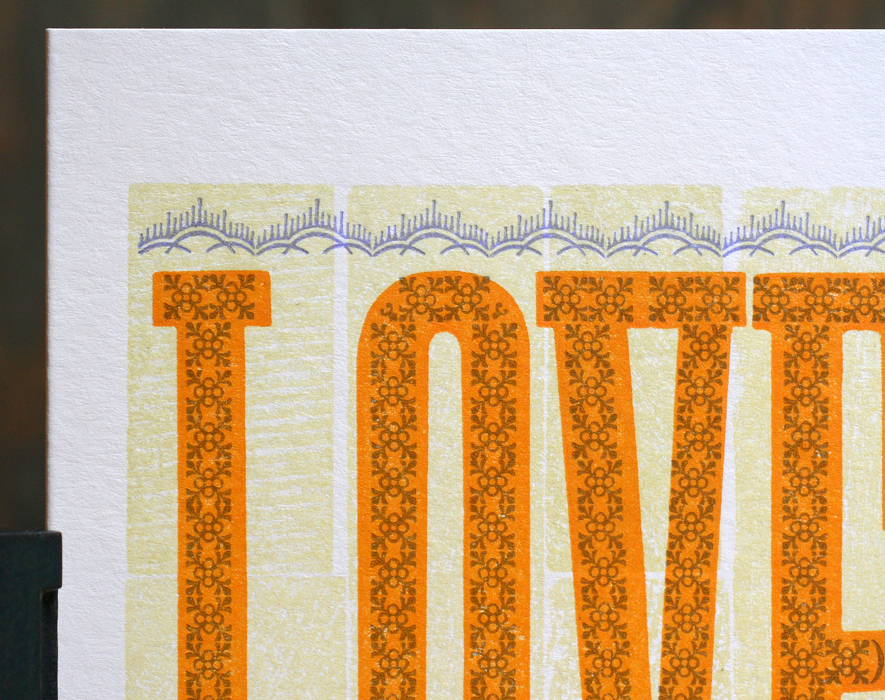 For the next card, I wanted to see if we could create a heart shape out of ornaments, but in a less obvious way. Thus I designed a gatefold style card so that the two sides would come together much the way a paper cutout heart does. Here is how it looked printed flat:
For the next card, I wanted to see if we could create a heart shape out of ornaments, but in a less obvious way. Thus I designed a gatefold style card so that the two sides would come together much the way a paper cutout heart does. Here is how it looked printed flat:
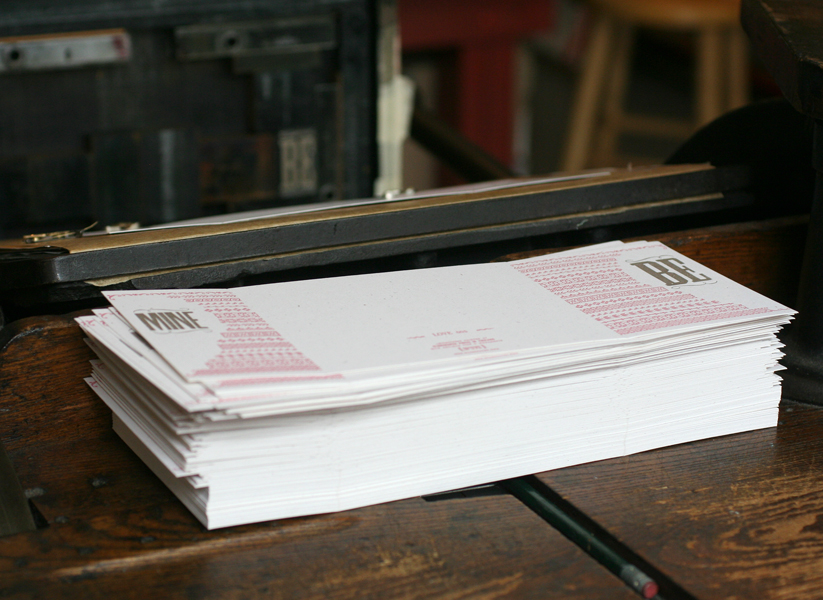 Printing gatefold cards requires a little thought and precision in the layout so that the two sides come together correctly when folded. This makes for interesting forms. As seen below, the words 'Be Mine' were on opposite sides of the chase.
Printing gatefold cards requires a little thought and precision in the layout so that the two sides come together correctly when folded. This makes for interesting forms. As seen below, the words 'Be Mine' were on opposite sides of the chase.
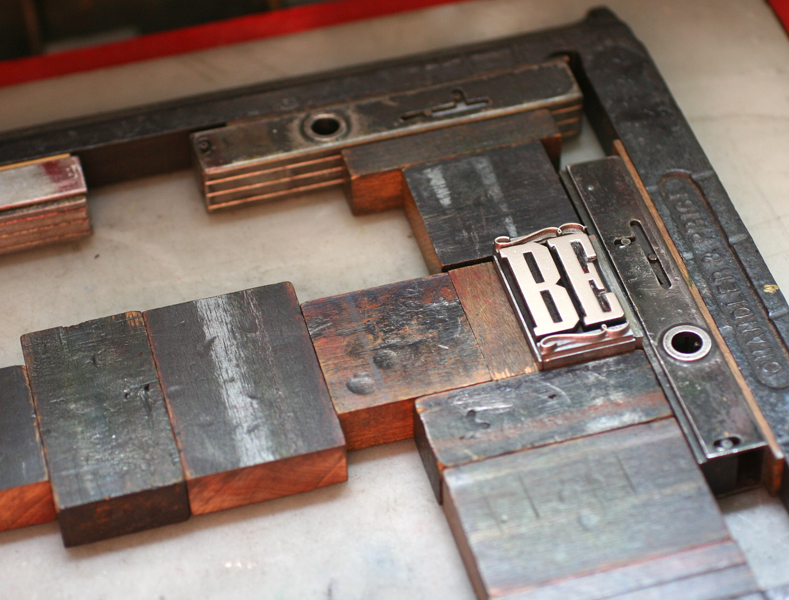 Here's the final!
Here's the final!
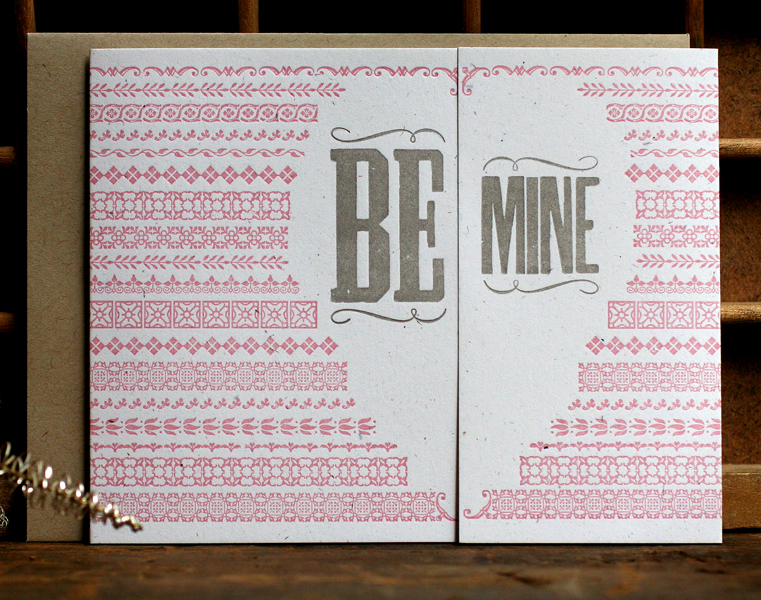 Hundreds of little ornaments make up the textured, afghan-like pattern.
Hundreds of little ornaments make up the textured, afghan-like pattern.
 The final card was a bit of a fluke, and came from listening to a lot of The Crystals in the studio, specifically 'Today I Met The Boy I'm Gonna Marry'. I pulled out our Moore Wood Type hearts to see if this card could come together organically.
The final card was a bit of a fluke, and came from listening to a lot of The Crystals in the studio, specifically 'Today I Met The Boy I'm Gonna Marry'. I pulled out our Moore Wood Type hearts to see if this card could come together organically.
 It's not every day we get to use our Cooper typefaces, which is a shame. This seemed like a golden opportunity to pull the Black Italic together with our cursive-styled Monoline Script.
It's not every day we get to use our Cooper typefaces, which is a shame. This seemed like a golden opportunity to pull the Black Italic together with our cursive-styled Monoline Script.
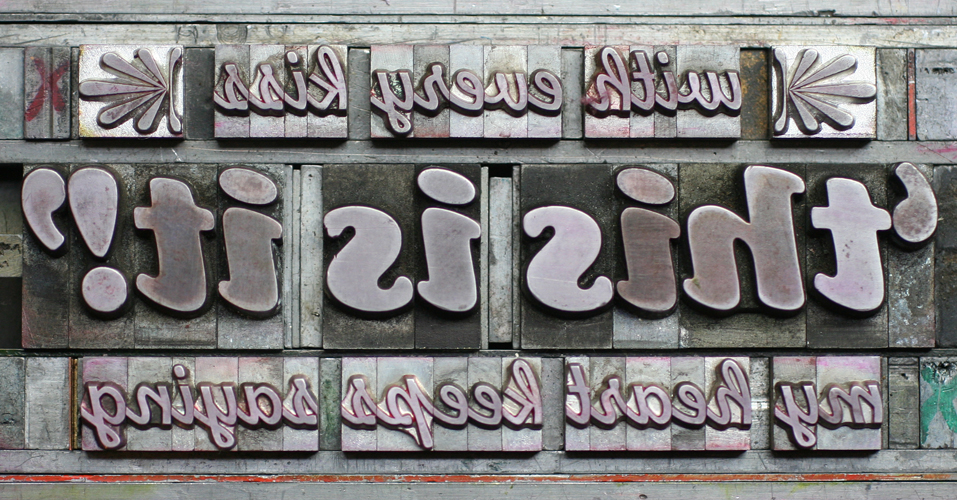 And there you have it!
And there you have it!
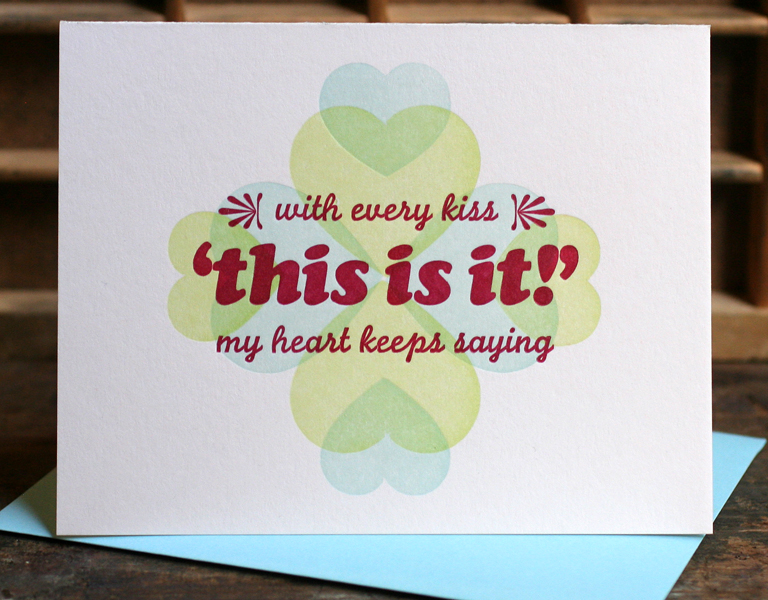 I printed the stars first in one direction then the other so that the subtle, largely transparent colors would overlap and create other colors. Then the burgundy text was printed on top.
I printed the stars first in one direction then the other so that the subtle, largely transparent colors would overlap and create other colors. Then the burgundy text was printed on top.
 Three great cards, in my humble opinion, that were very fun to design and print. And when all was said and done, the forms fit comfortably on one galley, ready to be distributed back into the collection. All three are now available in our etsy shop.
Three great cards, in my humble opinion, that were very fun to design and print. And when all was said and done, the forms fit comfortably on one galley, ready to be distributed back into the collection. All three are now available in our etsy shop.
